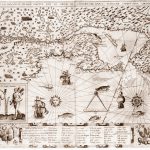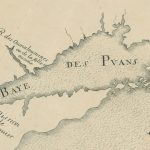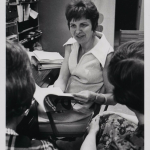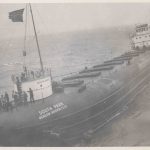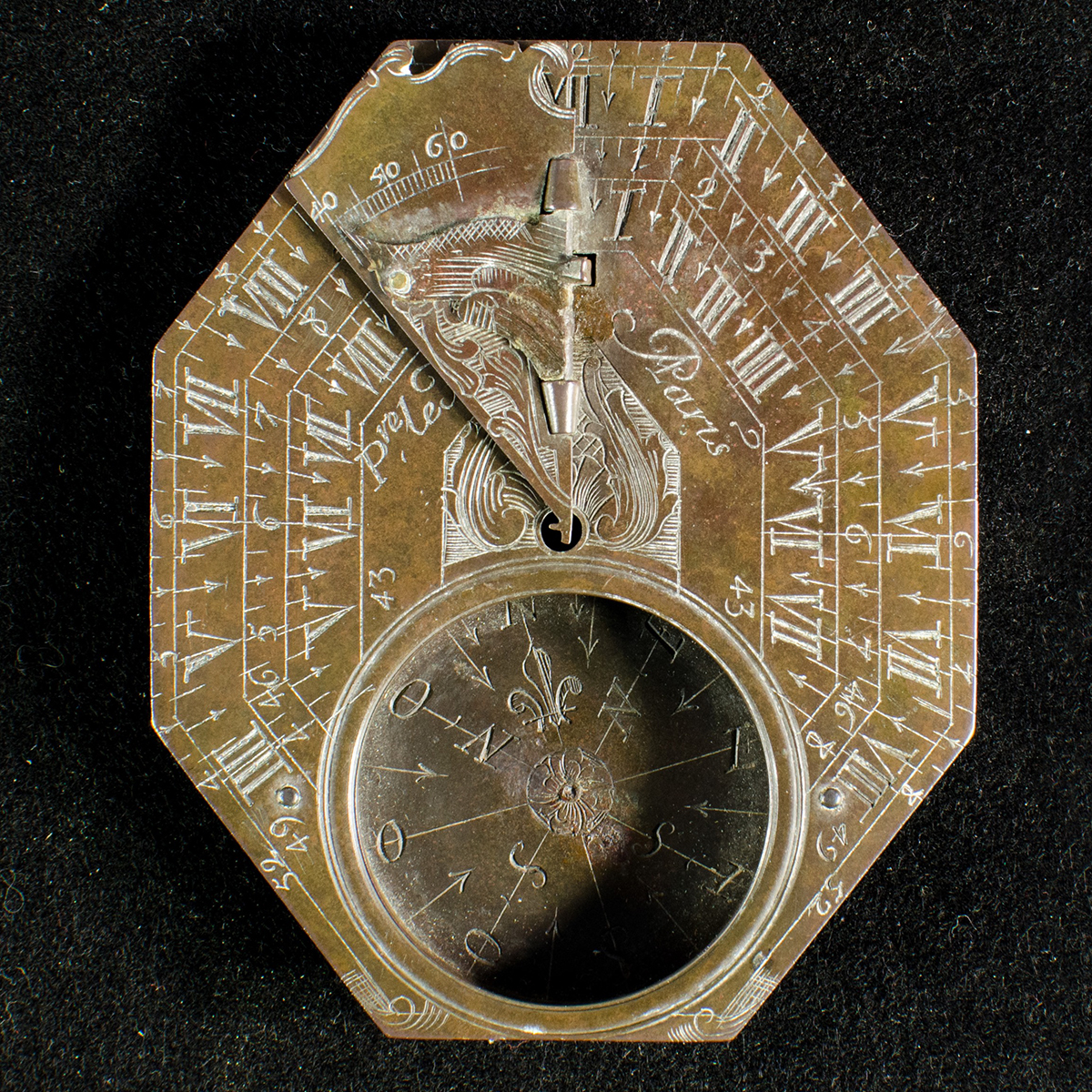 The Le Maire Sundial is a rare example of a mid-18th century French sundial (cadran solaire) compass (boussole). It was found near Green Bay in 1902 by a local antiquities collector, Frank Duchateau.
The Le Maire Sundial is a rare example of a mid-18th century French sundial (cadran solaire) compass (boussole). It was found near Green Bay in 1902 by a local antiquities collector, Frank Duchateau.
The sundial is broken, missing its glass compass cover as well as the back of its gnomon holder. Located on the front surface, beneath a bird-shaped gnomon (the part of the sundial that casts a shadow), is a hand engraved maker’s name indicating that the sundial was made in Paris, France: P’re Le Maire à Paris. Sundials of this type were distributed to French officers of New France in the 1750s.
The compass’s reverse (pictured above with a grey background, above) lists the names and latitudes of fifteen French forts, trading posts, and American Indian settlements between Nova Scotia and lower Lake Michigan. The most notable of these places to Wisconsin history is La baye 44.15, known today as Green Bay. It is likely that this navigational instrument was owned by a French officer stationed at La Baye (Green Bay) during the latter half of the 1750s.
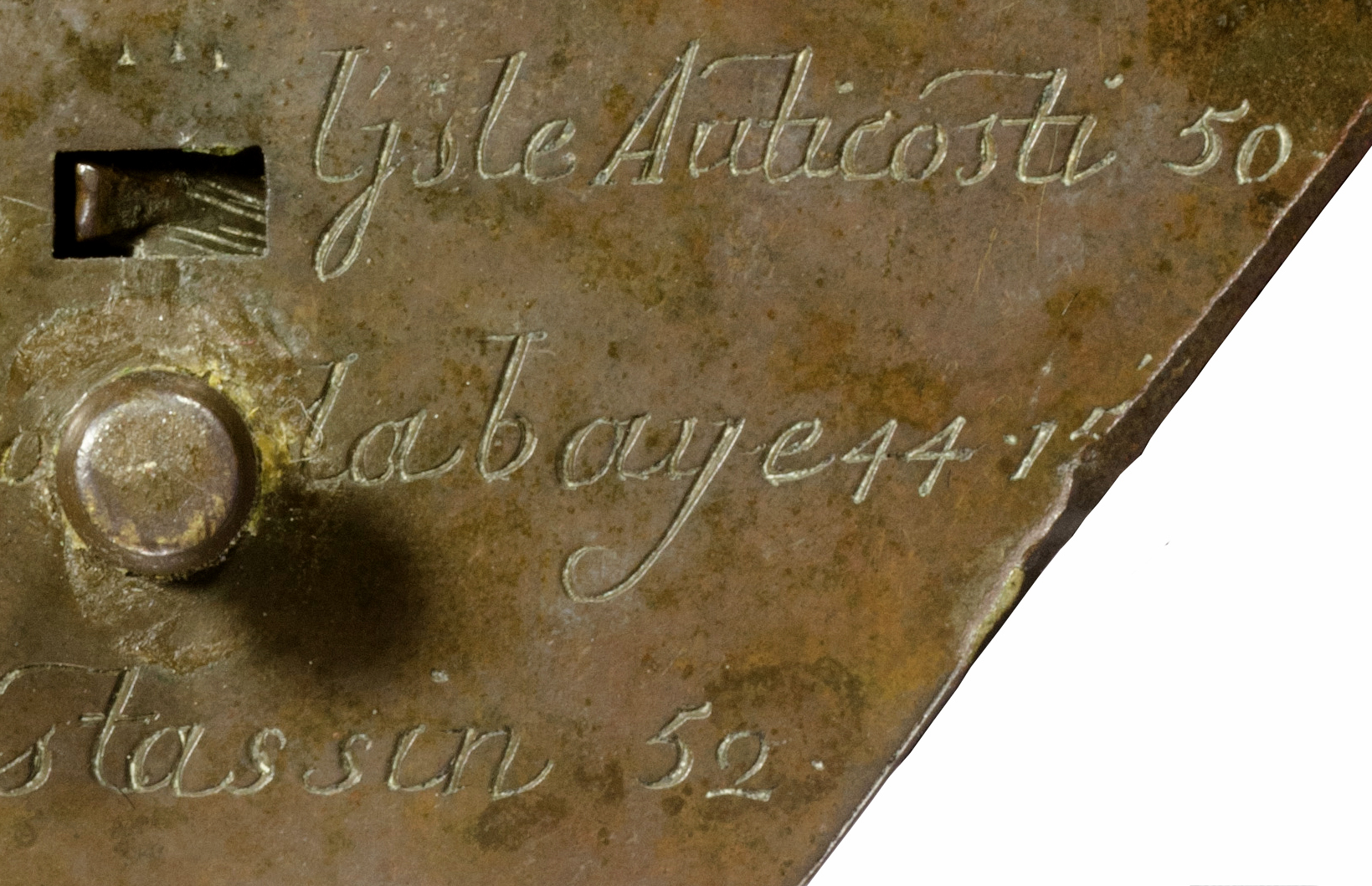
The mid-eighteenth century equivalent of today’s GPS, this sundial compass would have guided French officers along maritime highways stretching from the Atlantic Ocean to the southern end of Lake Michigan.
Listen below to the Le Maire Sundial’s segment on Wisconsin Public Radio’s Wisconsin Life.
Written by Kevin Cullen, December 2016.
Object courtesy of the Neville Public Museum of Brown County.

